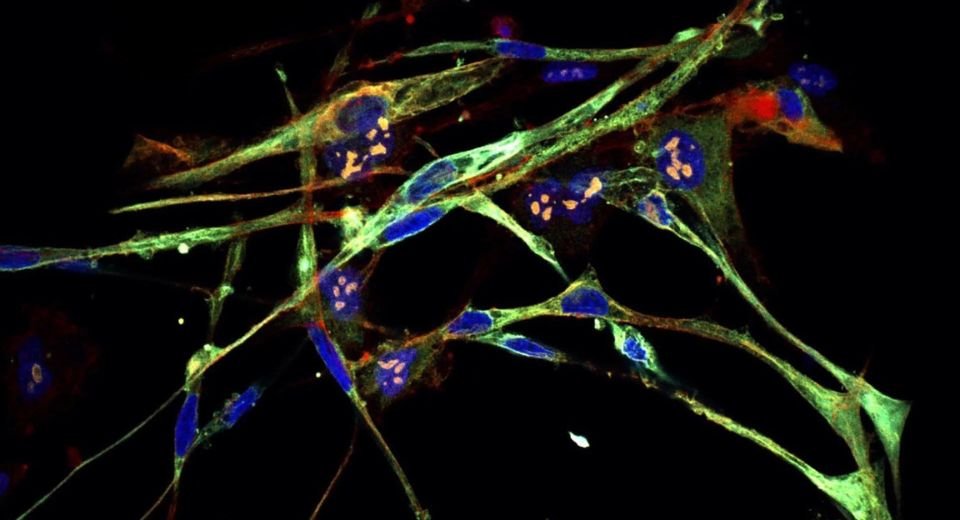HQ Team
February 20, 2025 – Researchers from Osaka University have identified a protein, AP2A1, that could hold the key to reversing cellular aging. This discovery opens new avenues for treating age-related diseases and improving skin health, offering hope for a future where aging can be slowed or even reversed at the cellular level.
What is AP2A1 and how does it work?
AP2A1, or Adaptor Protein Complex 2, Alpha 1 subunit, is a protein found in the stress fibers of senescent cells (older, less active cells that accumulate in organs as we age). These cells are notably larger than younger cells and exhibit thicker stress fibers, which help maintain their structure. The study found that suppressing AP2A1 in older cells reversed signs of aging, while overexpressing it in young cells accelerated senescence.
“We still don’t understand how these senescent cells can maintain their huge size,” says lead author of the study Pirawan Chantachotikul.
“One intriguing clue is that stress fibers are much thicker in senescent cells than in young cells, suggesting that proteins within these fibers help support their size.”
The role of Integrin β1
The research also revealed that AP2A1 interacts closely with integrin β1, a protein that strengthens cell adhesion to the extracellular matrix. This interaction helps senescent cells maintain their enlarged size and structure. By manipulating AP2A1 and integrin β1, scientists believe they can develop therapies to combat age-related diseases and improve cellular health. The results were very intriguing,” bioengineering professor Shinji Deguchi, one of the paper‘s authors, said in a statement.
Anit-aging therapies
The findings suggest that AP2A1 could serve as both a biomarker for aging and a target for anti-aging treatments. “Our work provides a new understanding of how stress fibers influence cell size and senescence,” said Chantachotikul. “This could lead to innovative therapies that slow down or even reverse the aging process”.
Global context
Aging is a major risk factor for chronic diseases such as heart disease, diabetes, and neurodegeneration. According to a 2024 study published in Nature, proteomic aging clocks using plasma proteins can predict age-related diseases and mortality with high accuracy4. The discovery of AP2A1 adds a new dimension to this field, offering a potential therapeutic target to address the root causes of aging.
What’s next?
While the research is still in its early stages, the potential applications are vast. From skincare products that promote cellular rejuvenation to treatments for age-related diseases, AP2A1 could revolutionize how we approach aging. Clinical trials are expected to begin within the next two years, bringing us one step closer to turning back the cellular clock.
The discovery of AP2A1 marks a significant milestone in anti-aging research. By understanding and manipulating this protein, scientists are paving the way for a future where aging is no longer an inevitable decline but a manageable process. As research progresses, the dream of extending human healthspan—and perhaps even lifespan—may soon become a reality.
The full study can be accessed in Cellular Signaling.


